Book your visit
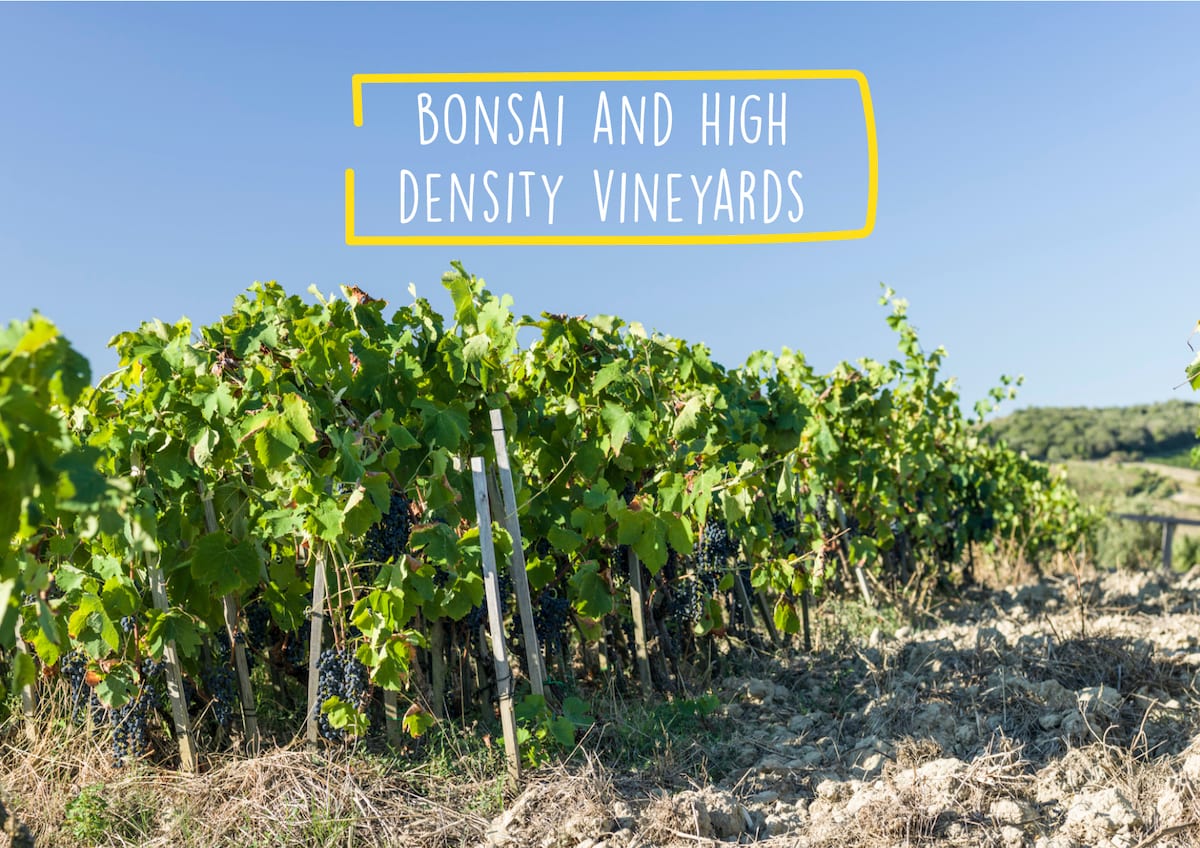
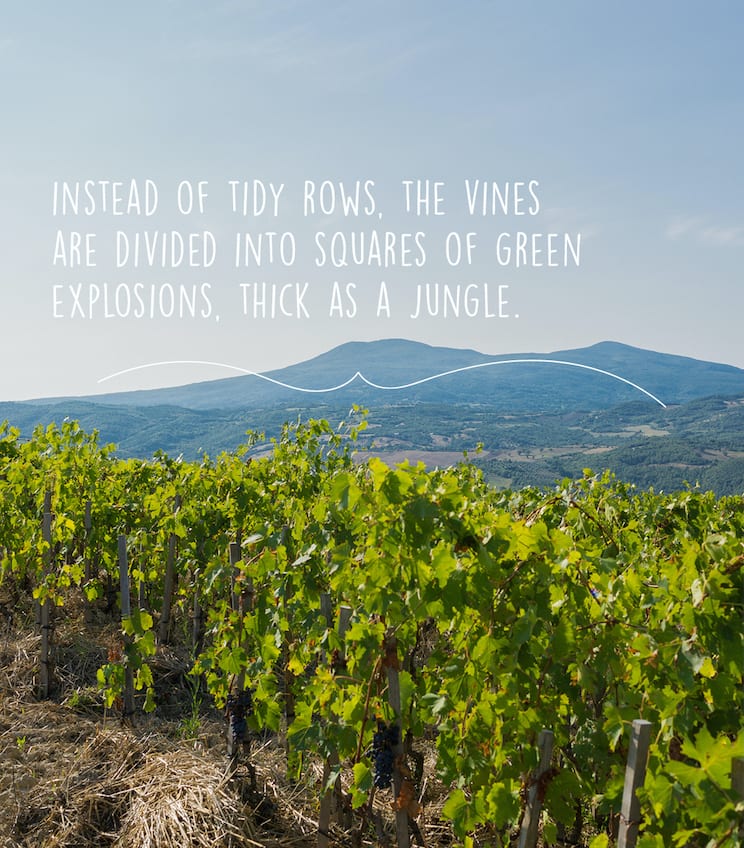
Sitting just above our Golden Cellar and further down the hill are two plots of land, planted with Sangiovese grapes. But these two half-acres look nothing like any vineyard you’ve ever seen before.
This is because our Bonsai vineyard is the densest vineyard in the world, with 62,500 vines. Normally, the average vineyard has 5000 plants per hectare, and our Lupi e Sirene vineyard has double that density, with 11,000 plants per hectare—still, from eleven-thousand to sixty-two thousand five hundred is quite a jump.
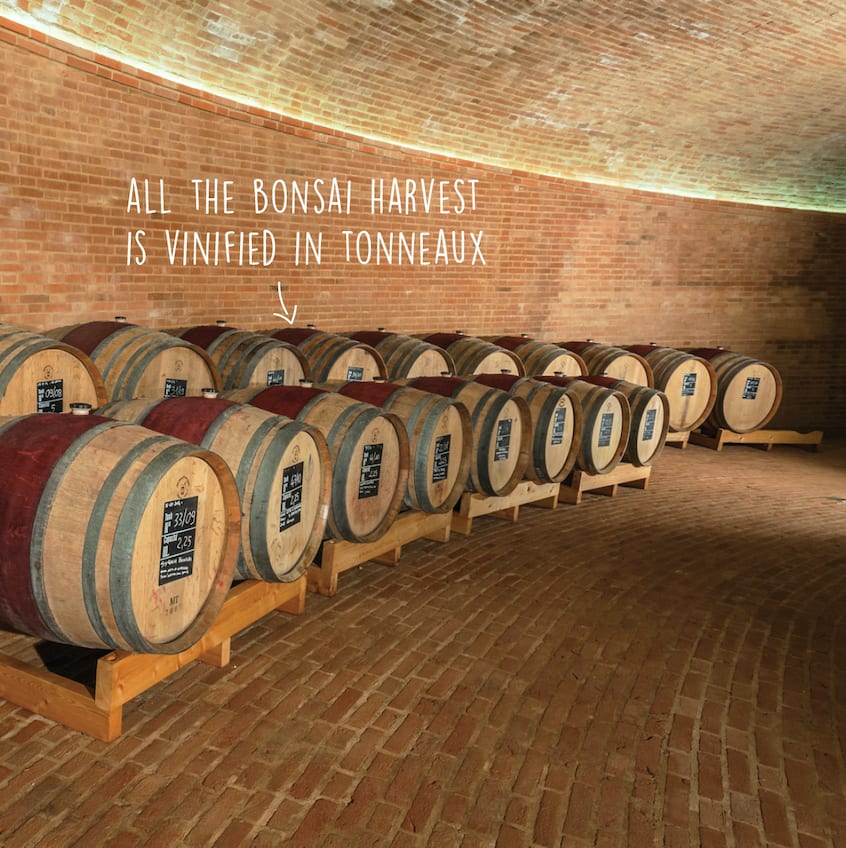
Now you might think that because we have so many more plants, we produce much more wine, but you’re wrong!
High density does not equal high yield, on the contrary, it means less yield, because each plant has to fight incredibly hard with the next for all the natural resources it needs to thrive. That’s why we only produce from 400 to 900 bottles of Bonsai per year, and one of the reasons we refer to it as our precious wine.
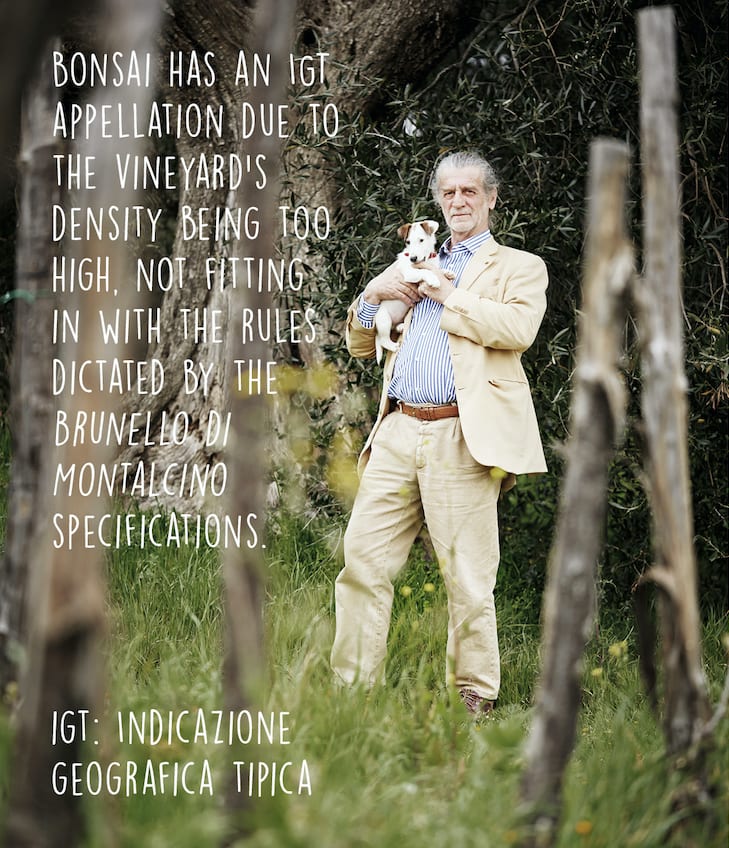
Francesco Illy was tired of all French winemakers telling him “in order to produce a good wine you need old vineyards with deep roots”.
His vines had been planted in the 90’s and according to the French “rules” wouldn’t have been good for another 20 years. So he decided to conduct an experiment deemed absurd by many, of planting the densest vineyard in the world. The high density forced the vines to expand vertically rather than horizontally, reaching depths normally only reached by much older vineyards, in just a matter of a few years. The crazy experiment was extremely successful, as Francesco was able to produce a structured, powerful, full-bodied wine from a young vineyard.
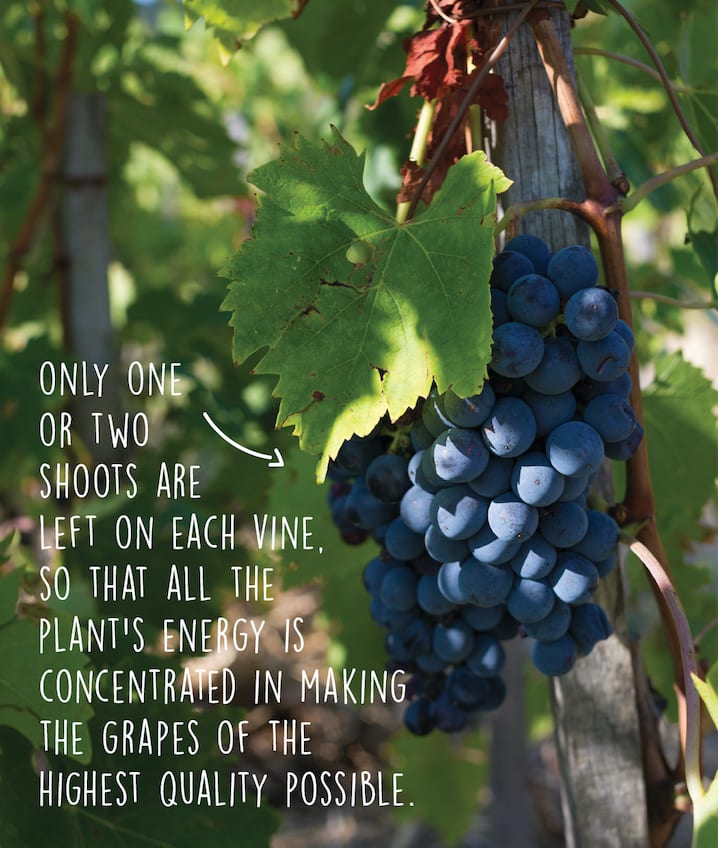
The Bonsai vineyard is divided into squares, rather than rows, simply as a way of allowing our team to easily access each vine, seeing as all work is done entirely by hand.
When spring comes around and the buds flower, our team goes through a tedious but vital process in the crafting of our Bonsai wine. Usually, the tips of buds that are too long get trimmed, a process known as cimatura. In our Bonsai vineyard we undertake another process instead, known as accapannatura which is when you braid the bud’s tips, to contain the plant’s growth, creating the jungle effect on the vines and, if you look closely, arches sprouting over them.
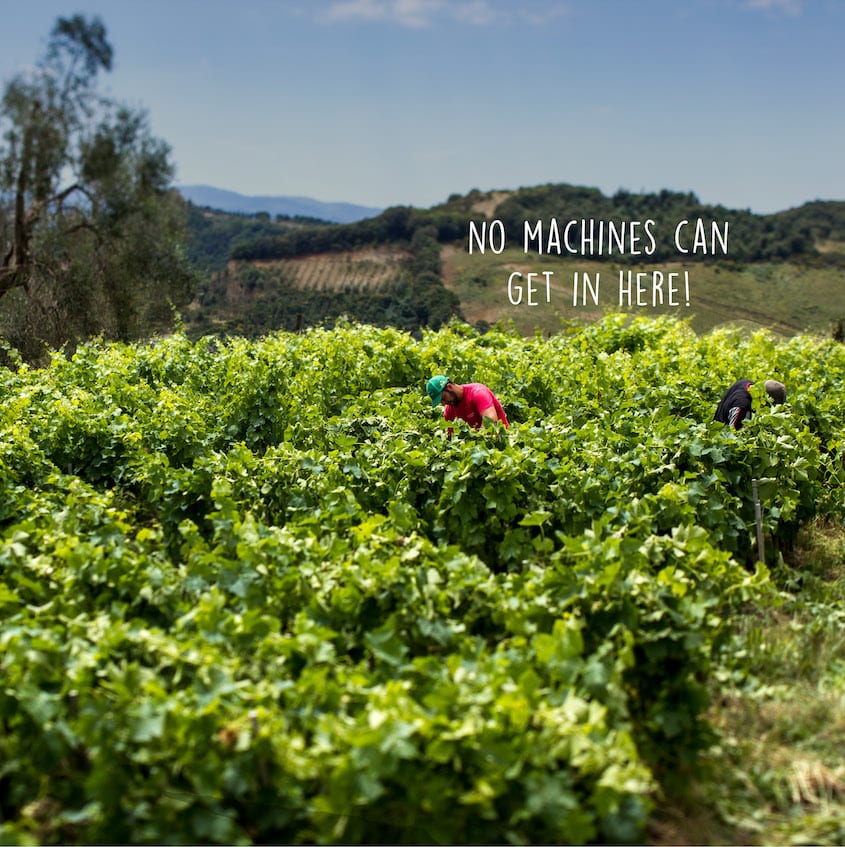
High density pros and cons
Cons
lower yield
you have to manually work in the vineyard, using machinery isn’t possible
Pros
fewer grapes means higher quality and therefore better wine
super artisanal method of production
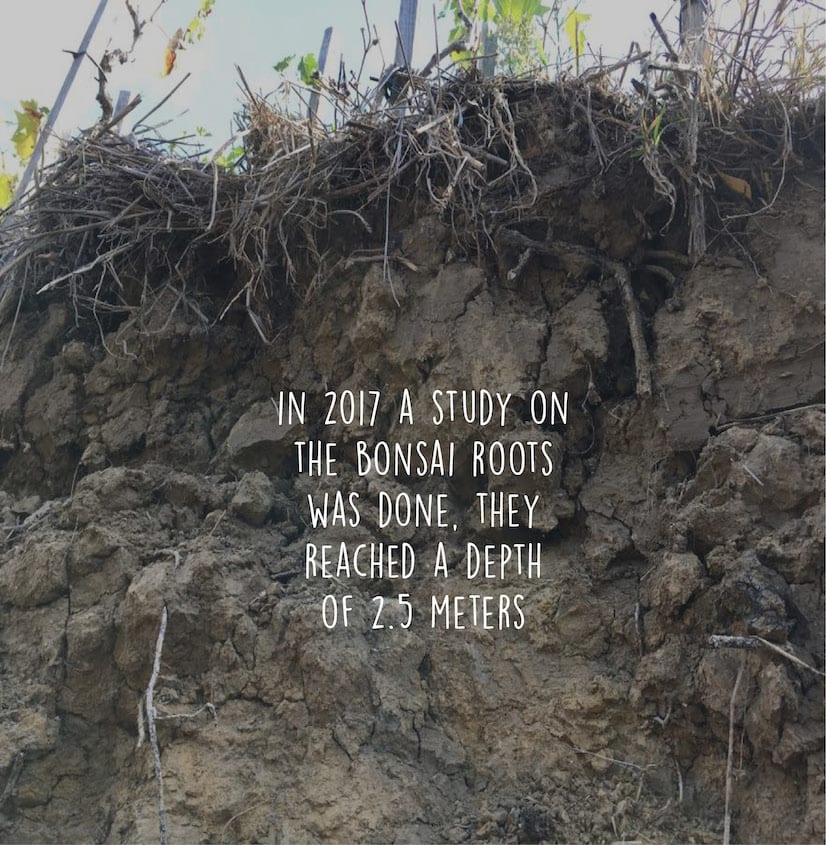
The Bonsai vineyards are planted following an alberello training method as it is a better way of protecting plants than other training methods. Planting vines using high density methods has another purpose; the vines are forced to dig deeper into the soil than they normally would, to search for all the nutrients. Unable to expand horizontally, they dig deep into the soil, piercing through many different stratifications of soil.
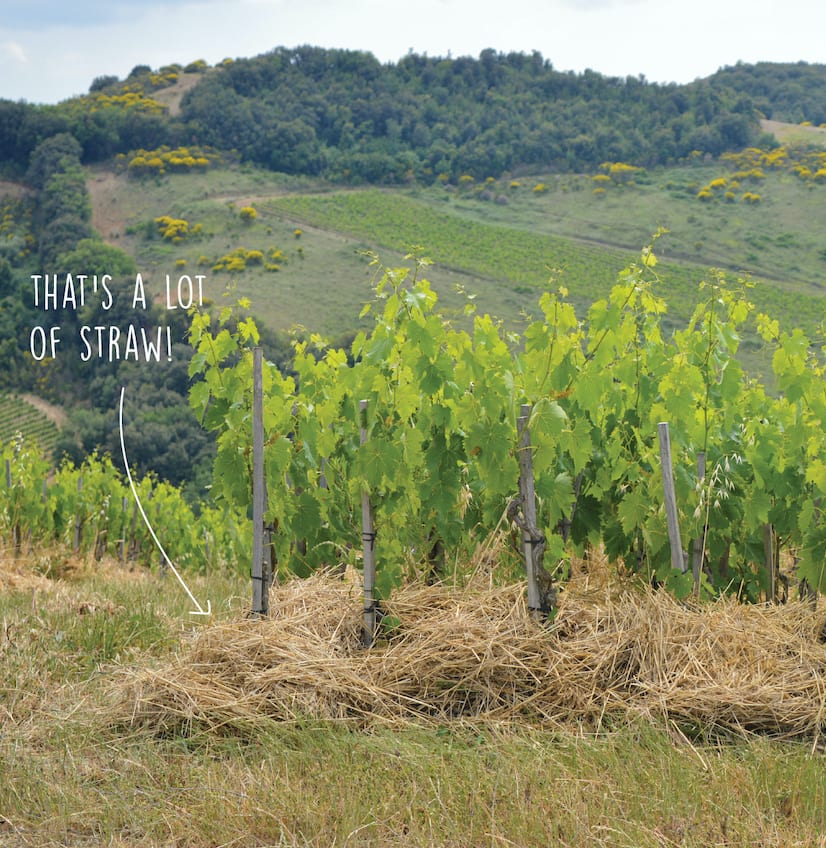
Organic compost is distributed around the vines and is then covered with hay, in a process known as pacciamatura (mulching) whereby the ground is covered to prevent the growth of weeds, to maintain the soil’s moisture, to protect the soil from excessive sunlight and to ensure that the ground retains as much water as possible, since none of our vines are irrigated and need to store as much water as possible.
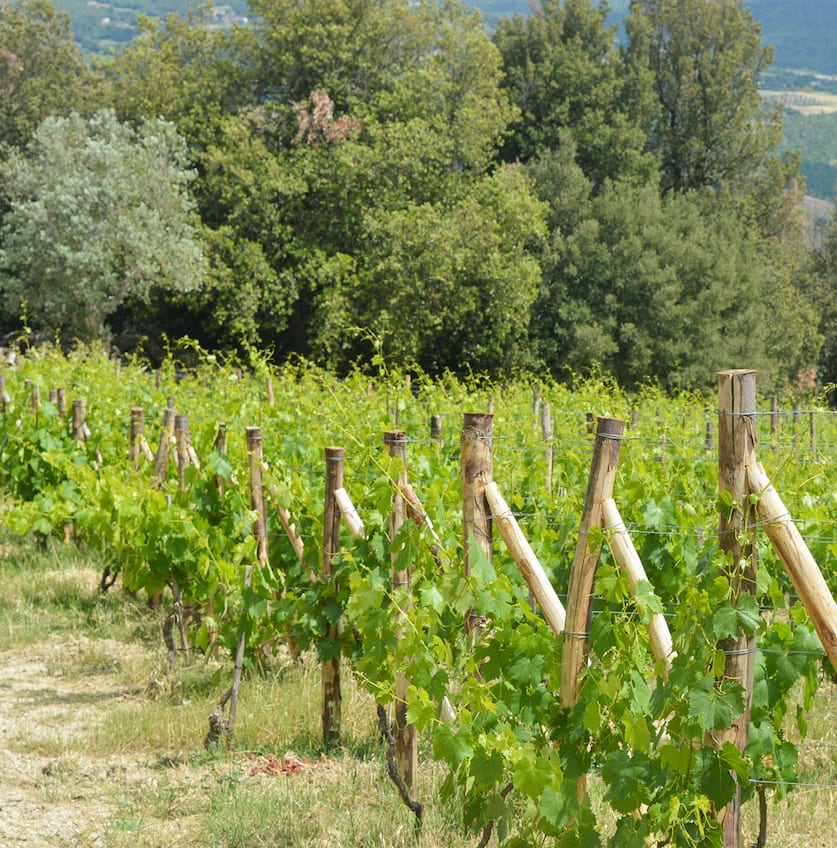
Lupi e Sirene was the first-ever (and only, for about 20 years) Brunello vineyard of Podere Le Ripi. It is one and a half hectares big, and planted following the Alberello training method, with 11.000 plants per hectare. The vineyard is subject to constant sun exposure which allows the grapes to ripen slowly but thoroughly. We produce an average of 6000 bottles a year of our most prestigious Brunello.